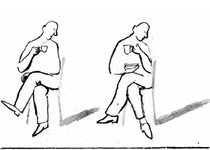- Dla kandydatów
- Dla studentów
- Informacje dla studentów I roku
- Informacje ogólne
- Informator o studiach
- Organizacja roku
- Zarządzenia Prodziekana ds. studenckich
- Kolokwia i egzaminy
- Prace i egzaminy dyplomowe
- Materiały dydaktyczne
- Pracownie
- Pracownia Projektów Studenckich
- Zespołowe projekty studenckie
- Oprogramowanie
- Konta i hasła w sieci studenckiej
- Studia doktoranckie
- Studia podyplomowe
- Samorząd, koła, kluby, chór
- Stypendia i sprawy socjalne
- Oferty pracy
- Dla pracowników
- Dla gości
- Badania
- Rada Naukowa Dyscypliny Nauki Fizyczne
- Kierunki badań
- Priorytetowy Obszar Badawczy II IDUB
- Realizowane projekty
- Sekcja ds. Obsługi Badań
- Seminaria i konwersatoria
- Konwersatorium im.J.Pniewskiego i L.Infelda
- Algebry operatorów i ich zastosowania w fizyce
- Środowiskowe Seminarium Fizyki Atmosfery
- Seminarium Zakładu Biofizyki
- Seminarium z fizyki biologicznej i bioinformatyki
- Seminarium Fizyki Ciała Stałego
- Multimedialne seminarium z ekono- i socjofizyki
- Exact Results in Quantum Theory
- Środowiskowe Seminarium Fotoniczne
- Seminarium Fotoniki
- Seminarium Zakładu Fotoniki
- Seminarium Gamma
- Seminarium "High Energy, Cosmology and Astro-particle physics (HECA)"
- Środowiskowe Seminarium z Informacji i Technologii Kwantowych
- Seminarium Fizyki Jądra Atomowego
- Seminarium fizyki litosfery i planetologii
- Seminarium Fizyki Materii Skondensowanej
- Seminarium "Modeling of Complex Systems"
- Seminarium nauk o widzeniu
- Seminarium "Nieliniowość i Geometria"
- Seminarium Optyczne
- Soft Matter and Complex Systems Seminar
- String Theory Journal Club
- Seminarium Koła Struktur Matematycznych Fizyki
- Seminarium "Teoria cząstek elementarnych i kosmologia"
- Seminarium KMMF "Teoria Dwoistości"
- Seminarium Teorii Względności i Grawitacji
- Seminarium "The Trans-Carpathian Seminar on Geometry & Physics"
- Seminarium Fizyki Wielkich Energii
- Konferencje
- Publikacje
- Research Highlights
- Optyka na Uniwersytecie Warszawskim
- Wydział
- Misja i strategia
- Władze Wydziału
- Zarządzenia Dziekana
- Zarządzenia Prodziekana ds. studenckich
- Struktura organizacyjna
- Historia Wydziału
- 90 lat Wydziału Fizyki
- 100 lat Wydziału Fizyki
- Fizykoteka – Wirtualne Muzeum Wydziału Fizyki UW
- Dziekanat
- Rada Wydziału
- Jakość kształcenia
- Stopnie i tytuły naukowe
- Nagrody Wydziału Fizyki
- Biblioteka
- Ośrodek Komputerowy
- Pracownicy i doktoranci
- Zamówienia publiczne
- Rezerwacja i wynajem sal
- Oferty pracy
- Osoby
- Zapraszamy
- Media
Seminarium Kosmologia i Fizyka Cząstek
2006/2007 | 2007/2008 | 2008/2009 | 2009/2010 | 2010/2011 | 2011/2012 | 2012/2013 | 2013/2014 | 2014/2015 | 2015/2016 | 2016/2017
2011-01-18 (Wtorek)
Aleksandra Piórkowska (IF UŚ)
The impact of cosmological model on testing theories of fundamental interactions
2011-01-11 (Wtorek)
Luis Alvarez-Gaume (CERN TH)
Further thoughts on Supersymmetry and Inflation: An update
2010-12-21 (Wtorek)
Mariusz Dąbrowski (Uniwersytet Szczeciński)
Własności i klasyfikacja egzotycznych osobliwości w kosmologii
2010-12-07 (Wtorek)
Alexander Belyaev (U. of Southampton)
Distinguishing Z' Physics with early LHC data
What is a Z' Physics and why it can be appealing at the LHC now?This is the subject of this talk where LHC potential to test anddistinguish some promising models with spin-1 Z' bosons isdiscussed. If a Z' is discovered then measurement of the mass andcross-section will provide a powerful discriminator between thebenchmark models. This discrimination can be further improved byZ' width measurement. Comparison between Tevatron and LHCpotentials to test Z' models is performed.http://arxiv.org/pdf/1010.6058
2010-11-30 (Wtorek)
Stephan Huber (U. of Sussex)
The electroweak phase transition and baryogenesis in the Two Higgs doublet model
2010-11-23 (Wtorek)
Jakub Mielczarek (OA UJ)
Loop quantum cosmology and the CMB observations
We present a possible way of indirect probing of thePlanck scale effects by the cosmological observations.Our considerations base on loop quantum cosmology (LQC) which is the symmetry reduced model of loop quantum gravity. We show how the standard phase of cosmic inflation is naturally realized within LQC. We consider generation of gravitational waves in this model. Based on this, we present the way to relate LQC effects with observations of the cosmic microwave background radiation (CMB). In particular, we investigate the possible LQC effects on the B-type polarization of the CMB. We confront the theoretical predictions with the available observational data and indicate the possible constraints on the Planck scale physics. We discuss perspectives and limitations of the proposed approach.
2010-11-16 (Wtorek)
Piotr Korcyl (UJ)
Supersymmetric Yang-Mills quantum mechanics and their Witten index
A class of supersymmetric quantum systems called supersymmetric Yang-Mills quantum mechanics will be presented. After a brief description of their relevance to theoretical physics, emphasis will be put on a subset of these models, namely the D=2 models with a general SU(N) gauge symmetry. The derivation of their spectra and eigenstates using the cut Fock base approach will be discussed. The evaluation of their Witten index will be presented as well.
2010-10-26 (Wtorek)
Michał Artymowski (IFT UW)
Cosmology and Loop Quantum Cosmology with vector fields
2010-10-12 (Wtorek)
Dorota Sokołowska (IFT UW)
Cosmological evolution towards the present Inert Phase in 2HDM
2010-10-05 (Wtorek)
Jan Sobczyk (IFT UWr)
Neutrino Interactions in 1 GeV Energy Region
All the current and planned neutrino osillation experiments use/will use fluxes of neutrinos of energies of the order of 1 GeV. Precise measurements of oscillation parameters require better knowledge of neutrino interactions in this energy region. There is a lot of both experimental and theoretical activity in the field and the purpose of the seminar is to present a review of this activity.
Stron 2 z 2







